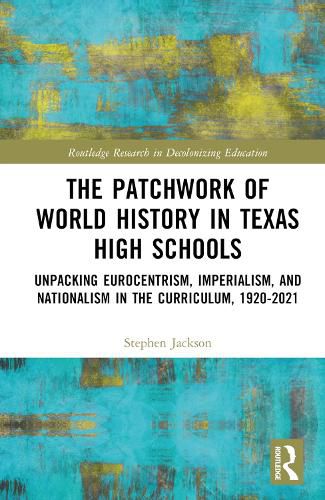Readings Newsletter
Become a Readings Member to make your shopping experience even easier.
Sign in or sign up for free!
You’re not far away from qualifying for FREE standard shipping within Australia
You’ve qualified for FREE standard shipping within Australia
The cart is loading…






This book traces the historical development of the World History course as it has been taught in high school classrooms in Texas, a populous and nationally influential state, over the last hundred years.
Arguing that the course is a result of a patchwork of competing groups and ideas that have intersected over the past century, with each new framework patched over but never completely erased or replaced, the author crucially examines themes of imperialism, Eurocentrism, and nationalism in both textbooks and the curriculum more broadly. The first part of the book presents an overview of the World History course supported by numerical analysis of textbook content and public documents, while the second focuses on the depiction of non-Western peoples, and persistent narratives of Eurocentrism and nationalism. It ultimately offers that a more global, accurate, and balanced curriculum is possible, despite the tension between the ideas of professional world historians, who often de-center the nation-state in their quest for a truly global approach to the subject, and the historical core rationale of state-sponsored education in the United States: to produce loyal citizens.
Offering a new, conceptual understanding of how colonial themes in world history curriculum have been dealt with in the past and are now engaged with in contemporary times, it provides essential context for scholars and educators with interests in the history of education, curriculum studies, and the teaching of World History in the United States.
$9.00 standard shipping within Australia
FREE standard shipping within Australia for orders over $100.00
Express & International shipping calculated at checkout
This book traces the historical development of the World History course as it has been taught in high school classrooms in Texas, a populous and nationally influential state, over the last hundred years.
Arguing that the course is a result of a patchwork of competing groups and ideas that have intersected over the past century, with each new framework patched over but never completely erased or replaced, the author crucially examines themes of imperialism, Eurocentrism, and nationalism in both textbooks and the curriculum more broadly. The first part of the book presents an overview of the World History course supported by numerical analysis of textbook content and public documents, while the second focuses on the depiction of non-Western peoples, and persistent narratives of Eurocentrism and nationalism. It ultimately offers that a more global, accurate, and balanced curriculum is possible, despite the tension between the ideas of professional world historians, who often de-center the nation-state in their quest for a truly global approach to the subject, and the historical core rationale of state-sponsored education in the United States: to produce loyal citizens.
Offering a new, conceptual understanding of how colonial themes in world history curriculum have been dealt with in the past and are now engaged with in contemporary times, it provides essential context for scholars and educators with interests in the history of education, curriculum studies, and the teaching of World History in the United States.